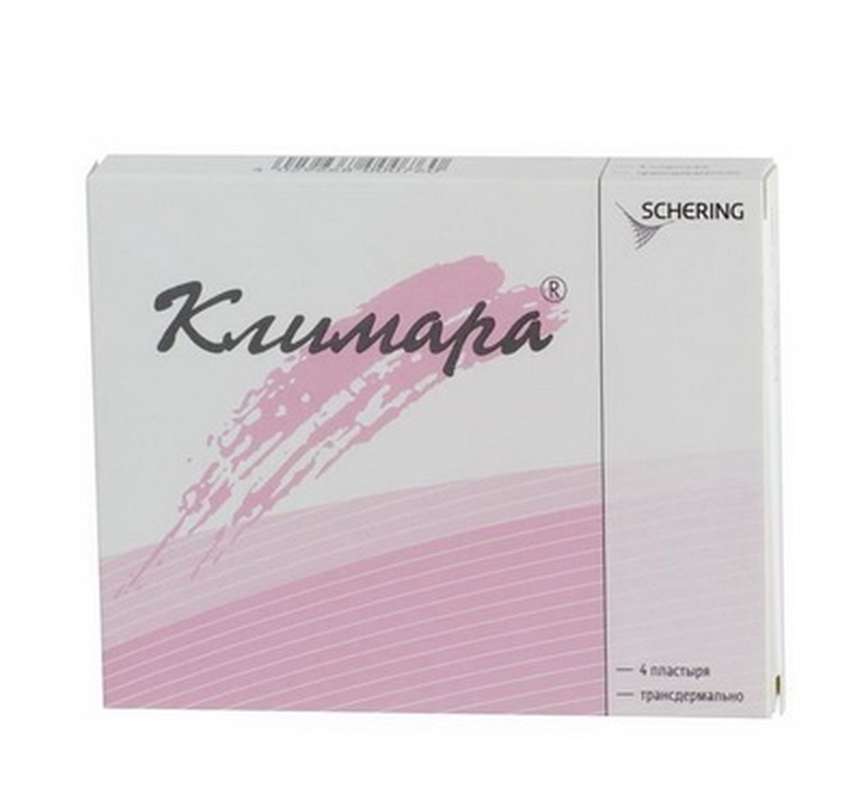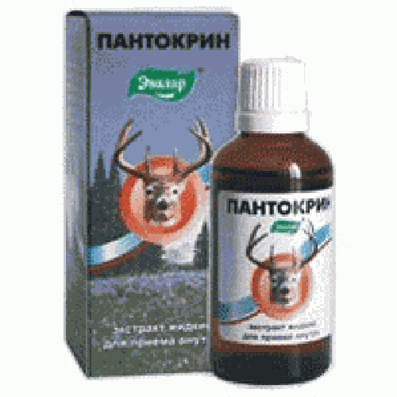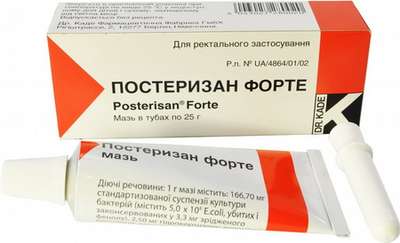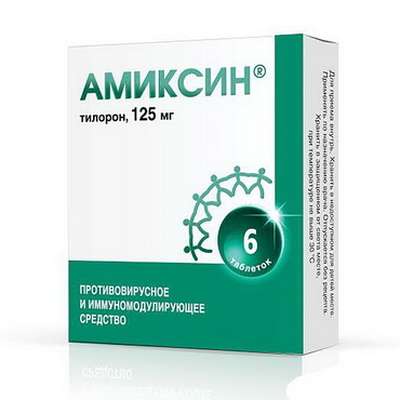Climara - an estrogen preparation.
Decreased ovarian function, accompanied by a decrease in the production of estrogens, leads to a menopausal syndrome characterized by vasomotor-vegetative and organic symptoms.
Carrying out hormone replacement therapy (HRT) is aimed at reducing these symptoms. Of all physiological estrogens, estradiol is the most active, with the greatest affinity for estrogen receptors.
17-beta-estradiol is identical to endogenous estradiol produced by the ovaries.
Has a feminizing effect on the body. Stimulates the development of the uterus, fallopian tubes, vagina, stroma and ducts of the mammary glands, pigmentation in the nipple and genital area, the formation of secondary sex characteristics by the female type. Oppresses the resorption of bone tissue, stimulates the synthesis of a number of transport proteins (thyroxine-binding globulin, transcortin, transferrin, globulin, binding sex hormones), fibrinogen. Increases blood levels of thyroxin, iron, copper, etc. Modulates receptors for progesterone and sympathetic regulation of smooth muscle tone, stimulates the transfer of intravascular fluid into tissues and causes compensatory retention of sodium and water. In large doses, it prevents the degradation of endogenous catecholamines, competing for the active receptors of catechol-O-methyltransferase.
Estradiol in the form of a transdermal therapeutic system (TTS) is a patch attached to a skin site. The control membrane provides a gradual and continuous release of estradiol from the reservoir with the active substance through the adhesive layer onto the skin. Due to the lack of the "first pass" effect through the liver, the TTC provides high efficiency when using smaller doses of the drug. TTC delivers estradiol unchanged to the bloodstream and maintains its plasma concentration during therapy at a constant level, adequate to the level in the early or middle follicular phase.
Regardless of the route of administration, estrogen doses necessary to reduce menopausal complaints have a dose-dependent stimulating effect on mitosis and endometrial proliferation. Monotherapy with estrogens increases the frequency of endometrial hyperplasia and thus the risk of endometrial carcinoma. In order to prevent endometrial hyperplasia in women with a preserved uterus, sequential prescription of progestogen for 10-14 days is recommended.
Pharmacokinetics: After dermal application Climars, estradiol is well absorbed through the skin. The average absorption rate is 50 μg / day and 100 μg / day, respectively.
The weekly Climara application is comparable to a continuous low-dose intravenous infusion aimed at creating an even, stable, plate-like level of estradiol in the serum, similar to the level that is created during the early / middle follicular phase in the reproductive period of life. The transdermal administration allows to avoid high oscillations of estradiol and its metabolites in the serum as it is observed after oral substitution therapy with estradiol and, accordingly, to avoid liver loading with a large amount of estradiol and its metabolites due to high presystemic metabolism ("primary passage effect") after oral administration. Thus, after transdermal administration of estradiol, no effect on protein synthesis in the liver has been observed.
The absolute value of the serum level of estradiol is directly proportional to the area of the plaster. The mean equilibrium concentration of estradiol in the serum is approximately 35 pg / ml (12.5 cm2 patch) and 70 pg / ml (25 cm2 patch).
After the application of TTS systems 50 μg (patch, area of 12.5 cm2) and 100 μg (plaster, 25 cm2 area), the physiological concentration of estradiol in the serum is reached after 2-4 hours. After 24 hours after removal of the system, the concentration of estradiol in plasma is reduced to of the original value. The content of metabolites of estradiol in urine on day 2 after removal of the system reaches the same values that were measured before application.
About 61% of estradiol binds nonspecifically to serum albumin and about 37% specifically to globulin binding sex steroids.
After transdermal administration, the conversion of estradiol to estrone and conjugates remains within the physiological limits noted in the early follicular phase during the reproductive period of life, with a serum estradiol / estrone ratio of about 1: 1. A high level of estrone as a result of intensive metabolism during "primary passage" through the liver during oral HRT with estradiol, reflected by an estradiol / estrone ratio lower than 0.1, is not observed.
Biotransformation of transdermally administered estradiol is similar to the biotransformation of endogenous hormones: estradiol is mainly metabolized in the liver, but also extrahepatically, for example, in the intestine, kidneys, skeletal muscles and target organs. These processes include the formation of estrone, estriol, catechol estrogens and their conjugates - sulfates and glucuronides.
Indications:
Hormone replacement therapy (HRT) to reduce the symptoms of estrogen deficiency due to natural menopause or surgical removal of the ovaries; prevention of postmenopausal osteoporosis.
Contraindications:
- vaginal bleeding of unknown origin;
- breast cancer or suspected of it;
- hormone-dependent malignant neoplasms or precancerous conditions, or suspicion of them;
- benign or malignant liver tumor at present or in the anamnesis;
- deep vein thrombosis in the acute stage, thromboembolic diseases at present or in the anamnesis;
- pregnancy;
- lactation period (breastfeeding);
- hypersensitivity to the components of the drug.
If any of these conditions or conditions appear against the background of HRT, the patient should stop using the drug and consult a doctor.
Special instructions:
Before the beginning of treatment, during the process or the repeated appointment of HRT, a woman is recommended to undergo a thorough general medical and gynecological examination, including pelvic examination (with cytological examination of cervical mucus), abdominal cavity, mammary glands, blood pressure control, coagulation system and lipid spectrum. Patients with diabetes require monitoring of blood glucose (at least 1 time per year).
Hormonal contraception should be discontinued at the beginning of HRT, if necessary, the patient should be recommended non-hormonal contraception.
If any of the conditions / risk factors indicated below are present before the start of therapy or progress, then in each specific case, the potential risk and the expected benefit of Climar's therapy should be considered before the onset or continuation of HRT.
Diseases of the cardiovascular system. A number of epidemiological studies have revealed a slight increase in the incidence of venous thromboembolism (VTE), for example, deep vein thrombosis or pulmonary embolism in women receiving HRT. If HRT is recommended for women with risk factors for VTE, the risk / benefit ratio of the therapy should be carefully weighed.
Risk factors VTE include individual and family history (the development of VTE in direct relatives at a relatively young age can indicate a genetic predisposition), as well as a pronounced obesity. The risk of VTE also increases with age. There is no single point of view regarding the possible role of varicose veins in the development of VTE.
The risk of VTE increases with prolonged immobilization, serious surgery or extensive trauma. Depending on the etiology of the disease and the duration of immobilization, consideration should be given to the possibility of a temporary discontinuation of HRT.
Treatment should be stopped immediately if symptoms of thromboembolism are present or suspected.
Endometrial cancer. With prolonged exposure to estrogen, the risk of developing endometrial hyperplasia or carcinoma increases. Studies have confirmed that the additional administration of gestagens reduces the risk of endometrial hyperplasia and / or endometrial cancer.
Mammary cancer. A meta-analysis of 51 epidemiological studies demonstrated that there is a slightly increased risk of developing breast cancer diagnosed in women who received HRT for 5 years. The observed increase in risk may be due to earlier diagnosis of breast cancer, biological effects of HRT, or a combination of both. The relative risk increases with the duration of treatment. This is comparable to the increased risk of breast cancer observed in women with each year of delaying natural menopause. The increased risk gradually disappears after the end of treatment within the first 5 years after the abolition of HRT. Breast cancer diagnosed in women receiving HRT compared with those who did not use HRT is less likely to metastasize.
Tumors of the liver. In extremely rare cases, benign or, even more rarely, malignant liver tumors were observed after the application of hormonal preparations of the Climara type. In rare cases, these tumors lead to life-threatening intra-abdominal bleeding. The main symptoms of a liver tumor are pain in the epigastric region, enlargement of the liver and / or symptoms of intra-abdominal bleeding.
Diseases of the gallbladder. Estrogens increase the lithogenicity of bile. In some cases, a predisposition to gallbladder disease increases with estrogen therapy.
Other states. Treatment should be stopped immediately if migraine headaches or unusually severe headaches develop for the first time, or other symptoms appear that are possible precursors of cerebral circulation disorders.
If, despite changes in the place of application, according to the recommendations, there is a recurring, persistent skin irritation (eg, persistent erythema or itching at the site of application), the use of TTS should be discontinued.
The general relationship between HRT and the development of clinical hypertension is not established. Despite the fact that a slight increase in BP is described in women receiving HRT, a clinically significant increase in BP with such treatment is extremely rare. However, if in individual cases a persistent, clinically significant hypertension develops during HRT, consideration should be given to discontinuing HRT.
Sexual steroids can be poorly metabolized in patients with reduced liver function. When carrying out HRT with the help of TTS, the active substance is not metabolized in the liver during the "first passage" through the liver, in such cases HRT should be administered with caution.
The recurrence of cholestatic jaundice or cholestatic pruritus, which developed earlier in pregnancy or during the previous use of sex steroids, requires the immediate cessation of HRT.
Some patients receiving HRT may develop unwanted estrogen stimulation, such as abnormal uterine bleeding. Frequent or persistent abnormal uterine bleeding during treatment is an indication for endometrial research.
Uterine fibroids may increase in size under the influence of estrogens. If this is observed, then treatment should be discontinued.
If endometriosis worsens during treatment, discontinuation of therapy is recommended.
If suspected prolactinous, the diagnosis should be excluded before therapy begins.
Sometimes chloasma can develop, especially in women with a history of chloasma in pregnancy. Women with a tendency to the appearance of chloasma should avoid prolonged exposure to the sun and exposure to UV radiation during HRT.
The following conditions occur or worsen during HRT: epilepsy, benign breast diseases, asthma, migraine, porphyria, otosclerosis, SLE, minor chorea. Although their relationship to HRT has not been fully proven, in such cases, women receiving HRT should be closely monitored.
Laboratory tests. Drugs for HRT may affect the results of some laboratory tests, including functional liver tests, thyroid function parameters, adrenal and kidney functions, plasma protein transport levels, for example, corticosteroid-binding globulin and lipid and lipoprotein fractions, parameters of carbohydrate metabolism, coagulation parameters and fibrinolysis.
Impact on the ability to drive vehicles and manage mechanisms
No influence was observed.
Suggested Use:
When carrying out HRT to reduce the symptoms of estrogen deficiency due to natural menopause or surgical removal of the ovaries, use a TTS containing the lowest dose of estradiol. If necessary, TTS can be used with a higher dose of estradiol. Further it is necessary to apply Klimaru with the least effective dose of the active substance.
For the prevention of osteoporosis, treatment should begin immediately after the onset of menopause. Long-term treatment is recommended, the scheme of which is set individually.
Treatment should be carried out either in a continuous or cyclic mode.
Therapy is only used by estrogens if a woman has a hysterectomy. In all other cases, therapy is prescribed with appropriate doses of progestins for 10-14 days each month.
TTS should be attached weekly in a constant mode. Each used patch should be removed after 7 days, after which the new patch is attached to another location.
It can also be recommended to use the Climara in a cyclic mode. In this case, TTS is attached weekly for 3 consecutive weeks, followed by a 7-day interval without attaching the patch until the next course of treatment.
Menstrualnopodobnoe bleeding is normal after 2-3 days after stopping the use of gestagens.
Method of TTS application
After removal of the protective film, the TTS (adhesive patch) is adhered to the clean, dry, undamaged skin area (without signs of irritation) along the spine or on the buttocks. TTS is not attached to or near the mammary glands. The site chosen for fixing the patch should not be bold; It is necessary to avoid attaching to the waist area, because when rubbing with tight clothing, the adhesive tape may become unstuck.
The patch should be attached immediately after opening the package and removing the protective film. The patch should be pressed hard with the palm of the hand to the fixation point for about 10 seconds. Make sure that there is good contact with the skin, especially around the edges.
Place of application should be changed with an interval of 1 week.
If the patch is attached correctly, you can take a bath and shower as usual. It should be borne in mind that the adhesive can peel off from the skin under the influence of very hot water or in the sauna.
In case the adhesive has become unstuck, a new adhesive should be stuck on the remaining days of the 7-day interval.
Packaging:
- Comes in original packaging. Item is brand new and unopened.
Storage:
- Keep away from direct sunlight.
- Keep locked and away from children.
- Store in dry place at room temperature.
- Do not exceed storage temperature higher than 25 C
Important notice- the outer box design may vary before prior notice!

 Cart
Cart





